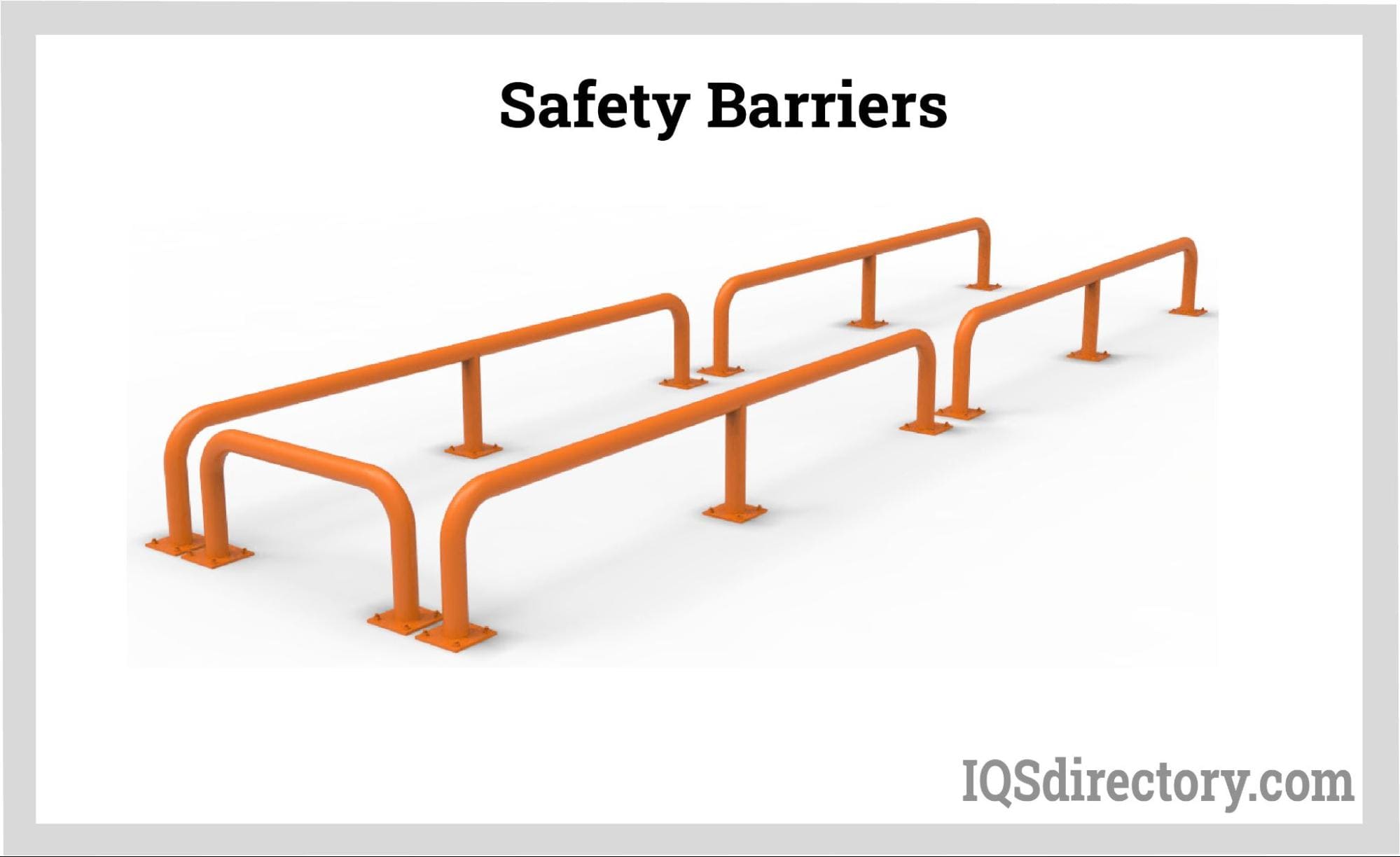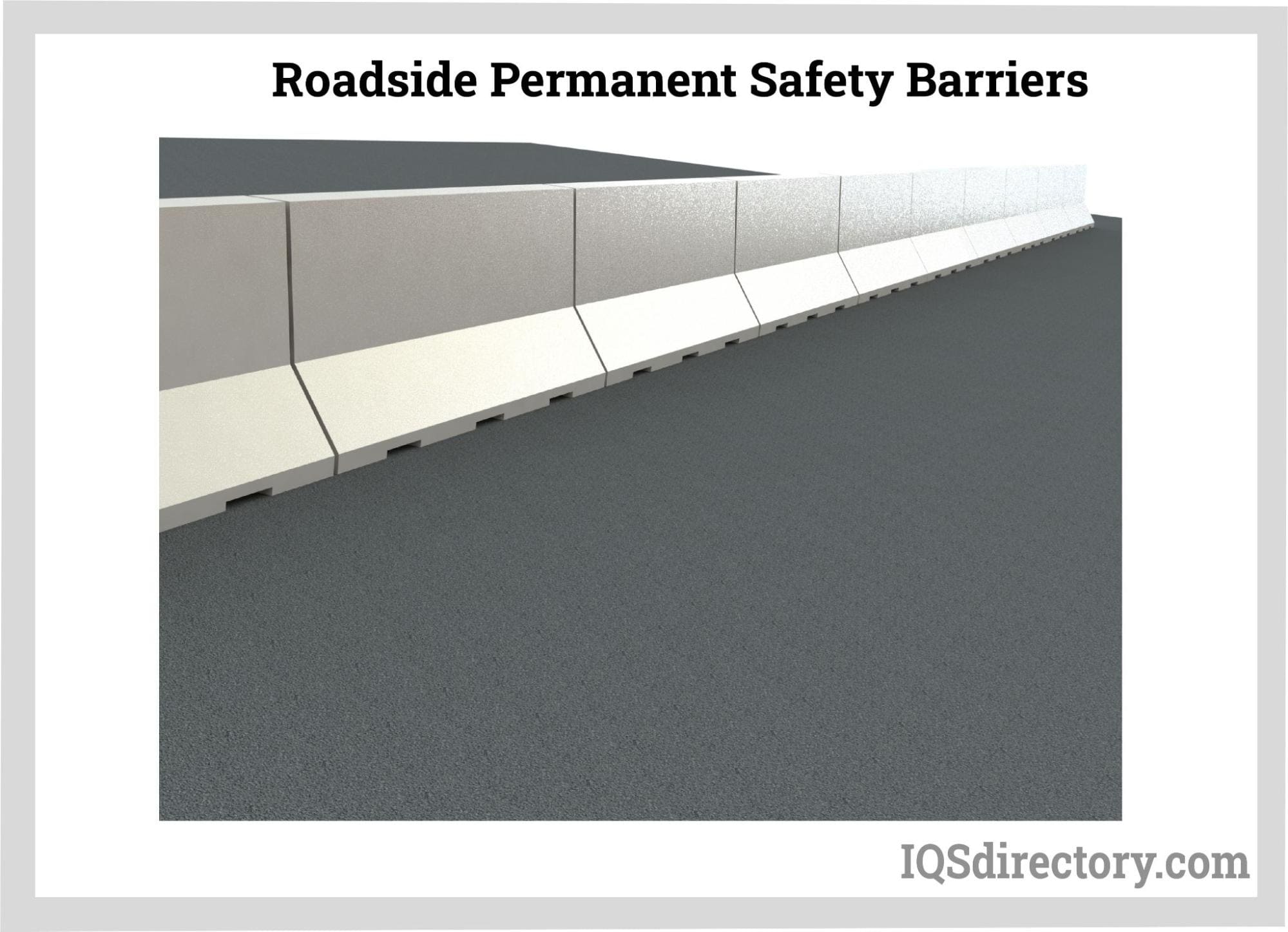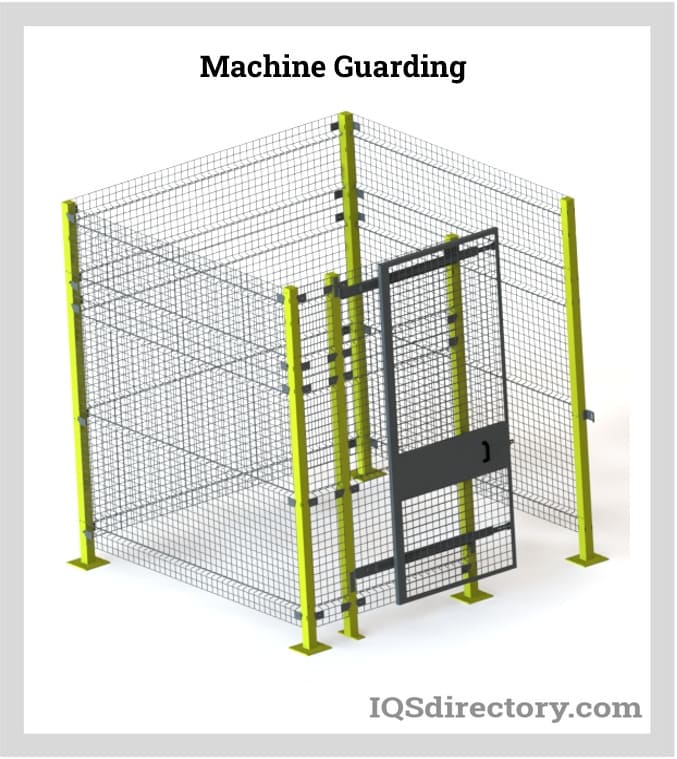Safety Barriers
When making or selling safety barriers, manufacturers and suppliers consider their purpose, how they will be used, and where they will be put. Because of their efficiency, safety barriers are frequently employed as machine guards in commercial and industrial settings.
Machine guarding protects the machine operator and other workers in the workspace from risks generated by the machine's regular operation. According to the most recent ISO 14120:2015 rules, machine guards shield workers and visitors from injury. These risks could include flying chips and sparks, parts that turn, move back and forth, or change direction. The guard panels are offered in mesh, solid, and clear panels for most applications.

Safety Barrier Groups:
Permanent barriers prevent deviations or threats by being physically present all the time, even before the deviation or threat occurs. Therefore, detection and diagnosis are irrelevant for such usage.

Preventive barriers include taking steps, independent of whether the threat or deviation materializes. Therefore, detection and diagnosis are irrelevant for such applications.
Safety barriers must be able to fulfill their barrier duties. They are thus capable of carrying out each step of a defensive operation. This preventative measure consists of
- to perform the defensive action
- to identify any deviations
- to determine whether defense measures are necessary
Machine Guards Used as Safety Barriers
Mesh panels for machine safety solutions: When only authorized individuals are allowed access to the company's machines, current industrial processes are kept safe. The mesh panels used to guard machines must offer the highest level of safety for people and machines.
Flexible mesh panels: One illustration of this is a system that can secure the mesh panels without using any tools. A special, adaptable machine guarding system that enables quick access for machine maintenance can be quickly and easily created. Such a method is simple to combine with a threaded bracket system.
Machine guarding: is the ideal safety solution for shielding and preventing contact between industrial equipment and body parts or other potential workplace dangers. It offers a safer working environment for employees, reducing the risk of harm and protecting the machinery from chipping or abrasion. Compared to metal safety fences or screens, a plastic net mesh is simpler to install and provides a more cost-effective level of security. This metal mesh is available with hexagonal, elliptical, or diamond-shaped apertures.

Barrier Guards as Safety Barriers
- Barrier guards are the proper safety measures for mechanical power presses with complete and partial revolutions. They are made to prevent the operator's hands and arms from straying beyond the "danger zone" that the machine specifies. The initial point-of-operation safety for machines that is typically considered is a barrier guard. There are different types of barrier guards that work differently to achieve the same goal. We look at some of these barrier guards below.
- Die enclosure guard: Requires a stable attachment to the die shoe or stripper.
- Fixed barrier guard: Must be firmly attached to the press's bolster plate or frame.
- Interlocked press barrier guard: Must be interlocked with the press clutch and fastened to the press frame or bolster so that the clutch cannot be engaged unless the guard itself or the guard's hinged or movable portions meet the specifications mentioned. An interlocking press barrier guard's hinged or moveable portions must not be used for manual feeding. In addition, the guard must prevent the opening of the interlocked portion and reach the point of operation prior to slide closure or before the slide stops.
- Adjustable barrier guards must be set up and used according to barrier regulations. They must also be securely attached to the press bed, bolster plate, or die shoe.
Applications of Safety Barriers
Safety barriers stop workplace accidents and limit access to specific dangerous areas. Safety barriers can therefore be employed in the following configurations:
- storage and processing
- medical and pharmacy
- commercial businesses
- manufacturing industry
Advantages of Safety Barriers
- preventing and reducing accidents
- safeguarding employees from direct exposure to potential dangerous objects
- enable machine operators to operate safely and continuously without interruption
- makes machine maintenance and cleaning a whole lot easier
- They limit access to potentially dangerous places.
Conclusion
Due to their efficiency, safety barriers are frequently employed in industrial and commercial contexts. For protection and security, both indoors and outdoors, there are many kinds of safety barriers and safety posts. Among the barriers that help prevent accidents and provide protection are fully welded barriers, pull-out rail barriers, and low-level barriers. Overall, safety barriers in the workplace can have various advantages, with the top one being the reduction of accidents. Many organizations continue to update and modify their rules to suit each employee's health and safety better, and doing so is an investment that pays off.
Choosing the Correct Safety Barriers Manufacturer
To make sure you have the most positive outcome when purchasing Safety Barriers from a Safety Barriers Manufacturer, it is important to compare at least 5 Suppliers using our list of Safety Barriers manufacturers. Each Safety Barriers Manufacturer has a business profile page that highlights their areas of experience and capabilities and a contact form to directly communicate with the manufacturer for more information or request a quote. Review each Safety Barriers company website using our patented website previewer to get an idea of what each company specializes in, and then use our simple RFQ form to contact multiple Safety Barriers businesses with the same form.

